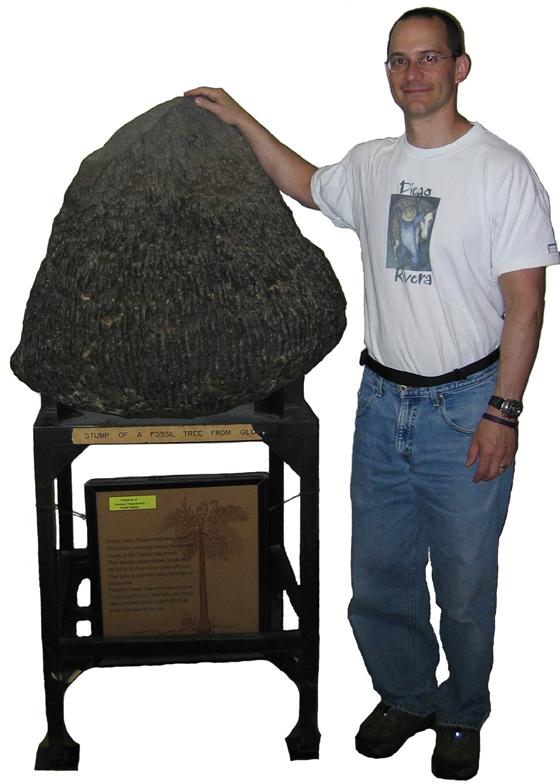
 |
 |
Devonian
Period: 416-359.2 Million Years Ago
Gallery: New York, USA
Gallery: New York, USA
Back | Gallery
New York, USA | Next |
 Eospermatopteris Specimen at University of Illinois Oldest known Forest Devonian 375 Million Years Ago Gilboa, New York |
| Middle
Devonian fossil trunks from Gilboa, New York provide a window
into the earliest forests. Stumps with roots stretching out
into a paleosol (fossil soil) have been preserved as casts
at a site known as Riverside Quarry. The casts reveal only
the outer structure of these tree stumps. From the 1870's
and until recently the stumps have been assigned to various
plant groups including Psaronius (the tree fern), Eospermatopteris (the
accepted name) and a progymnosperm (Nudds & Selden,
2008, pp. 98 & 99). The mystery of Eospermatopteris identity was
not solved until recently. In 2007 Stein et al. described
the discovery of fossil trees from Shoharie County, New York
uniting the crown of Wattieza with the trunk of Eospermatopteris. Wattieza is
a genus of prehistoric tree that belongs to the class Cladoxylopsida.
This class is currently placed within the division Pteridophyta.
So, fossil stumps at Gilboa are cladoxylopsid trees related
to ferns. |
Bibliography |
| Stein, W.E., Mannonlini, F, VanAller Hernick, L., Landing, E. & Berry, C.M. (2007). Giant cladoxylpsid trees resolve the enigma of the Earth's earliest forest stumps at Gilboa. Nature, vol 446: pp. 904-907. |










